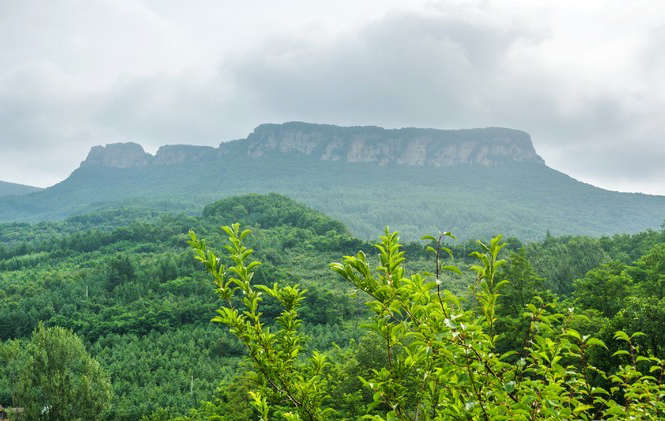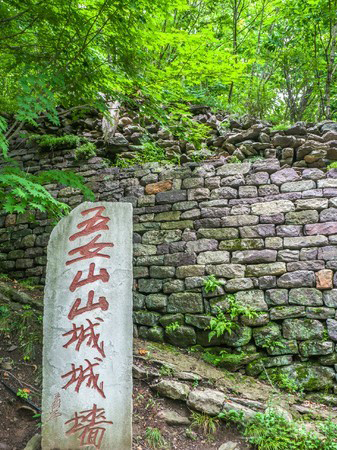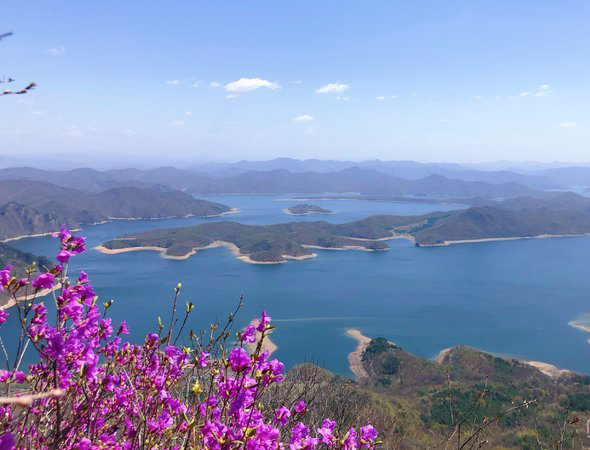 Hidden high within the Wunü Mountains of Huanren County in Liaoning province, Wunü Mountain City is one of the last known remnants of the Korean-led Goguryeo Kingdom (37 BC–668 AD). As a place of invaluable historical significance, it was designated a UNESCO World Heritage Site in 2004. Until 668 AD, the Goguryeo Kingdom was the largest of the three kingdoms into which ancient Korea was divided. Little historical records remain regarding the kingdom and its origin is shrouded in mystery, resulting in a chaotic mixture of fact and myth.
Hidden high within the Wunü Mountains of Huanren County in Liaoning province, Wunü Mountain City is one of the last known remnants of the Korean-led Goguryeo Kingdom (37 BC–668 AD). As a place of invaluable historical significance, it was designated a UNESCO World Heritage Site in 2004. Until 668 AD, the Goguryeo Kingdom was the largest of the three kingdoms into which ancient Korea was divided. Little historical records remain regarding the kingdom and its origin is shrouded in mystery, resulting in a chaotic mixture of fact and myth.
Historians believe it was founded in 37 BC by a prince named Jumong from the Kingdom of Buyeo (c. 200 BC–494 AD), who was enthroned as King Dongmyeong or the “Holy King of the East”. Talk about a fancy job title! According to legend, he was the son of Hae Mosu of Buyeo and Yuhwa, who was the daughter of the river god Habaek. The river god did not approve of Hae Mosu, so he drove Yuhwa away to the Ubal River, where she met and became the concubine of King Geumwa of Eastern Buyeo (86 BC–410 AD).
However, Yuhwa was already pregnant, and she promptly gave birth to an egg! King Geumwa tried desperately to destroy the egg and even attempted to feed it to animals, but they instead protected it. Eventually, he returned it to Yuhwa and from it hatched a baby boy, who was named Jumong or “Skilled Archer”. In the interest of literally living up to his name, Jumong went on to become an archer of unparalleled talent! After being driven away by his jealous step-brothers Daeso and Yongpo, he managed to establish a territory spanning most of the Korean Peninsula and parts of northeastern China, known in ancient times as Manchuria. It was here that he founded his kingdom and constructed his first imperial capital, Wunü Mountain City.
 The unusual cuboid shape of the Wunü Mountains and its sheer vertical cliffs made it nearly impermeable to any kind of attack, which protected the capital from opposing armies. Deep within the valley, a treacherous 938-metre (3,077 ft.) long zigzagging earthen road was the only way in or out. Since it was so difficult to reach, many historians argue that the Goguryeo King and nobility would not normally reside there, but would instead use it as a shelter during times of war. Even during peak times, the city could only accommodate about 100 people at most.
The unusual cuboid shape of the Wunü Mountains and its sheer vertical cliffs made it nearly impermeable to any kind of attack, which protected the capital from opposing armies. Deep within the valley, a treacherous 938-metre (3,077 ft.) long zigzagging earthen road was the only way in or out. Since it was so difficult to reach, many historians argue that the Goguryeo King and nobility would not normally reside there, but would instead use it as a shelter during times of war. Even during peak times, the city could only accommodate about 100 people at most.
Wunü Mountain City represents a perfect blend of manmade structures and nature. It swiftly became the archetypal mountain city of its time, being imitated by numerous cultures thereafter thanks to its virtually impenetrable defences. During its entire history, it was never once successfully invaded or captured by enemy forces. Even when the Goguryeo capital was transferred from Wunü to Guonei City (modern-day Ji’an, Jilin province), it remained an important transportation hub and was continuously added to.
The main peak of the Wunü Mountains is over 800 metres (2,600 ft.) high, and its near flat top stretches for 1,500 metres (4,921 ft.) from south to north and 300 metres (984 ft.) from east to west. The ruins of the city itself are mainly located on the eastern slope and on a small plateau at the peak. While the cliff-faces were exploited for defence, the city was also surrounded by a stone wall on its east and southeast sides, which was punctuated by three gates. All of the constructions in the city were built by wedging stones, which did not decay like bricks or tiles. Thanks to this archaic method, the remains of the imperial palace, city walls, military barracks, watchtowers, houses, and warehouses can still be seen today, many of them dating back over 2,000 years ago!
 Alongside these ancient structures, archaeologists have unearthed iron arrowheads, fragments of armour, and a pair of iron shackles from what was believed to be the military barracks. A nearby observation platform was once used to give the local soldiers a wider field of vision, but nowadays is the ideal place to soak in stunning panoramic views of the surrounding countryside and the Huanren Reservoir, the largest reservoir in Liaoning province.
Alongside these ancient structures, archaeologists have unearthed iron arrowheads, fragments of armour, and a pair of iron shackles from what was believed to be the military barracks. A nearby observation platform was once used to give the local soldiers a wider field of vision, but nowadays is the ideal place to soak in stunning panoramic views of the surrounding countryside and the Huanren Reservoir, the largest reservoir in Liaoning province.
On the mountain range, there are two water sources that once supplied the city. One lies on the western side of the city centre and is known as Heavenly Pool. This rectangular stone pool is 12 metres (39 ft.) long, 5 metres (16 ft.) wide, and approximately 2 metres (7 ft.) deep. The other source, known as Yinwa Cove, is situated on the eastern side of the mountain and is actually connected to the mouth of a natural spring. Regardless of the season, these two wells never dry up and supply drinking water throughout the year. Wunü Mountain City may have been remote, but it certainly didn’t lack in modern amenities!